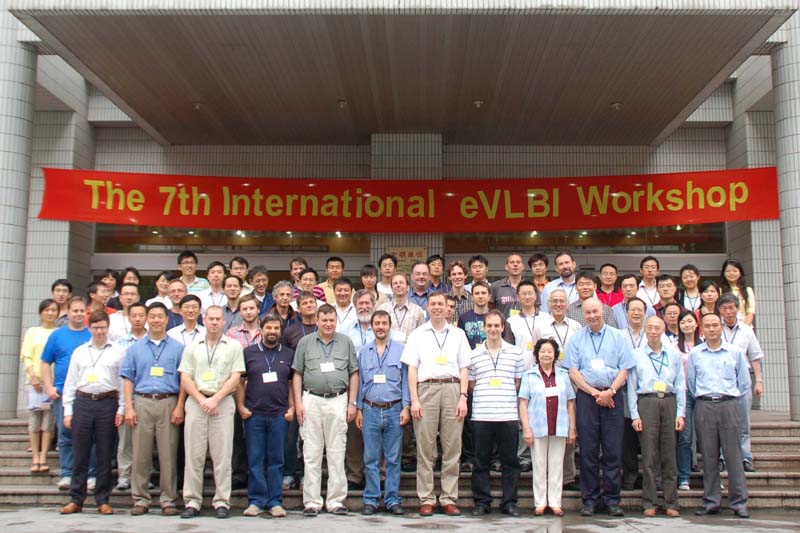|
|
| 7th International e-VLBI Workshop at Shanghai Astronomical Observatory |
 |
Text Size: A A A |
|
|

The 7th International e-VLBI Workshop was held in Shanghai, China, on 16-17 June 2008 (www.shao.ac.cn/eVLBI2008). It was organized by the Shanghai Astronomical Observatory (SHAO) of the Chinese Academy of Sciences (CAS) and generously sponsored by Express Production Real-time e-VLBI Service (EXPReS), CAS and the National Natural Science Foundation of China (NSFC).
The workshop gathered 87 participants working on both radio astronomy and network science in 11 countries around the world. 27 oral presentations and six posters were presented on topics covering the status of e-VLBI, on-going projects in e-VLBI facilities around the world, latest scientific outcomes using high data rate and e-VLBI technology development.
Two panel discussions took place following the presentation sessions each day: internet connection and e-VLBI technology on June 16, and a standard for e-VLBI data format and transfer protocols was lively discussed on June 17. The astronomers reached a consensus to standardize the e-VLBI data format and transfer protocol, and a sub-group was set up to work on the task.
Two live demos were also given, demonstrating e-VLBI research on scientific and engineering work respectively. The e-CVN demo on June 16 involved the Chinese VLBI Network consisting of four telescopes (Shanghai 25m, Urumqi 25m, Beijing 50m and Kunming 40m) and the software/hardware correlators at SHAO. It demonstrated VLBI satellite tracking in near real-time mode. The e-APT demo on June 17 was carried out with Shanghai 25m (SHAO), Kashima 34m (NICT), Parkes 64m (ATNF), Mopra 22m (ATNF), ATCA 5x22m (ATNF) and DiFX software correlator at Parkes. The CSTNET (China), AARNet (Australia), JGN2plus (Japan) and CENIC (USA) provided the high-speed network involved. For this demo, data were streamed from Kashima, Parkes, Mopra and ATCA at a rate of 512Mbps. Shanghai could only work with a data rate of 256Mbps due to a suspected problem in DiFX software, although the network connection from Shanghai to Parkes correlator worked fine at 512 Mbps. This reason is being investigated. The antennas, networks and correlator ran successfully during the 12hr observations. Before the end of the demo, an image of one of the calibrator sources (an AGN) was produced and displayed. The Shanghai telescope will be able to work at 512Mbps and will participate in e-EVN experiments in October 2008.
Overall the workshop provided an opportunity to broaden international and national cooperation in e-VLBI activities and to strengthen the cooperation between the network scientists and radio astronomers. Additional workshop photos are available at www.shao.ac.cn/eVLBI2008/photo/photo.html.
|
|